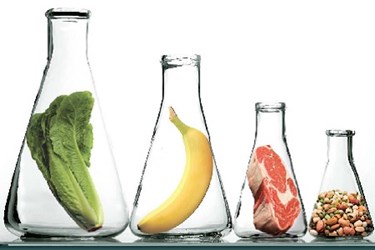Chemicals Are Vital To Food Safety
By Laurel Maloy, contributing writer, Food Online

Though chemicals are often portrayed as the villain, they play a crucial role around the world in food safety
The word “chemicals” instantly engenders negative feelings when used in the same sentence as anything having to do with food. The public is consistently bombarded with messages of the harmful effects of chemicals. Consumer and advocacy groups attack anything remotely associated with chemicals or their manufacturing, especially when it comes to the food-supply chain. Chemicals are considered the bad guy, when, in actuality, consumers in the U.S. enjoy one of the safest food-supply systems in the world, due largely in part to chemistry — the study and development of chemical substances.
Below are some examples of how chemistry has provided convenience and safety to the world’s food-supply chain:
- Plastic was created in a laboratory by a metallurgist—one who studies the physical and chemical behavior of metallic elements, compounds, and mixtures. Plastic packaging allows foods to remain protected against air and grime while being transported, stored, and displayed in grocery stores. Plastic, in the form of storage containers, storage bags, and plastic wraps, are utilized in homes for the preservation and protection against food contamination and to maintain freshness.
- Chemical refrigerants, as well as the plastic insulation, hoses, seals, etc…, are all made possible by chemistry. Without refrigeration, many foods spoil quickly or become a breeding ground for harmful bacteria.
- Chlorine chemistry is why we have a potable, safe supply of fresh water in our country. The World Health Organization (WHO) estimates that dirty water kills at least 6,000 people across the world, every day. Water treatment facilities use chlorine to purify water resources against waterborne bacteria and viruses. Utilizing chlorine as a disinfectant is highly effective in controlling disease-causing bacteria, such as Salmonella and E. coli. It is even effective against the hepatitis-A virus.
- Members of the U.S. military eat Meals Ready to Eat (MREs) when they are deployed to hot spots around the world. These meals are extremely portable, are packaged in pouches, and cook themselves through a chemical reaction with a flameless ration heater — all that is need is water. MREs withstand extreme temperatures and have a three-year shelf life in any climate, made possible by layers of resilient plastics.
- Chemical compounds are utilized to protect our food processing plants, our transportation hubs, our distribution centers, and our grocery stores from disease-carrying pests such as mice, rats, flies, and cockroaches.
- Chemistry has created a DNA-based means to detect contamination in raw ingredients and in processed foods. DNA testing can identify contaminants before the food ever reaches store shelves or our homes.
Yes, there are chemicals that can be harmful. Pesticides and drugs, if not utilized properly and monitored for their safe use, can present a health risk to the public. Pesticide residues are studied and tolerances set by the Environmental Protection Agency (EPA) as a means to ensure the food supply remains safe. On-going scientific studies continue to update standards of chemical safety and provide valuable information for sound chemical regulation. Chemical use is not indiscriminate or unregulated; public safety is of the utmost importance, except to some having no regard for human safety. This is why we have the EPA and other regulatory agencies.
The final step to acceptance and tolerance may be for those who develop and use chemicals within the food-supply chain to produce information for public consumption. People fear what they do not understand; this is what the fantasists count on in order to sow the seeds that continue to undermine the confidence in our food-supply chain. Knowledge, on the other hand, is power. Studies, such as one recently completed at Cornell and another released in March, stress the weight attributed to transparency and personal connections between the consumer and the food industry.
